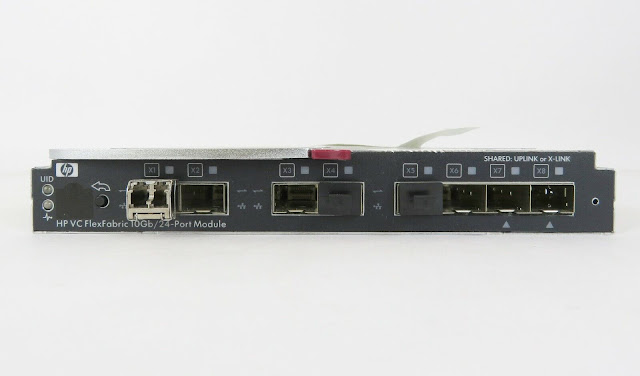 |
| Load Port Module |
It serve as the interface between the external environment and the internal
fabrication processes within semiconductor and related industrial facilities.
They provide a fully contained and controlled environment for the transfer of
wafer cassettes or other work-in-process (WIP) between the front opening
unified pods (FOUPs) and the processing tools located within the cleanroom.
With the ability to automatically load and unload wafers or other product
substrates, it play a critical role in optimizing asset utilization and
throughput.
Wafer Cassette Handling Functionality
At their core, Load
Port Module are designed to smoothly and reliably handle the transfer
of wafer cassettes between the FOUP and the loadlock chamber of the processing
tool. This involves automatically opening and closing the FOUP door, precisely
positioning the FOUP for cassette exchange, gripping and exchanging the
cassette between the FOUP and loadlock, and verifying the correct cassette has
been transferred. State-of-the-art Load Port Modules offer high throughput
cassette exchange with under 3 seconds per operation. Their non-particulating
cassette handling arms and redundant environmental sealing provide a critical
particle-free transfer environment.
Versatile Configurations for Different Facility Layouts
While maintaining a standardized mechanical and software interface, it can be
configured in different arrangements to accommodate the specific facility
layout and logistical constraints. Common configurations include stand-alone
vertical modules, dual horizontal modules, and bi-directional pass-through modules.
The stand-alone vertical modules provide a compact footprint well-suited for
high bay cleanroom facilities. Dual horizontal modules enable simultaneous
loading and unloading of two tools. Bi-directional pass-through modules allow
wafer transfer from both sides, increasing operational flexibility.
Fully Automated Operation Controlled by MES
Advanced loadlock operate under the full control of the manufacturing execution
system (MES). The MES coordinates and schedules all cassette transfer requests
from the tools based on real-time facility data. It assigns portable FOUPs to
the appropriate load port, opening tool process chamber loadlocks for matching.
Once the FOUP is docked, the load port automatically manages wafer
identification, tracks cassette position, and performs the exchange without
operator intervention. Transaction records are updated within the traceability
database for full batch history.
Environmental Isolation and Particle Mitigation
A key role of Load Port Modules is to ensure wafers are transferred in a highly
controlled contamination-free environment. They provide dual environmental
seals between the facility interface and the loadlock interface. Ultra-clean
HEPA-filtered purge gas flows are precisely regulated to maintain positive
interior pressure. Ionized particle guns neutralize static charges. Cassettes
are not exposed to unclassified areas at any point. Advanced detection monitors
for microparticles and alarms if thresholds are exceeded during operations.
Together, these features minimize risks of particulate contamination which
could impact yields.
Integration with Facility Automation Infrastructure
To enable full integration into the facility's automated material handling and
logistics, it feature standardized mechanical, electrical, and software
interfaces. They can directly interface with overhead hoists and crane systems
for FOUP positioning. Communication protocols allow tight process control
integration with the MES and tool controllers. Condition monitoring sensors track
lifetime usage and predictive diagnostics. This full integration allows
facilities to rapidly scale production capabilities by adding additional
loadlock as throughput requirements grow over time.
Reliable Operation in Harsh Cleanroom Environments
Despite operating in stringent cleanroom environments exposed to corrosive
gases and temperature/humidity fluctuations, Load Port Modules are engineered
for continuous availability over 25,000 hours of operational lifetime. Their
modular mechanical and electrical components can be rapidly serviced or
replaced with minimal facility downtime. Critical wear items like motors,
seals, and filters are field replaceable. Continuous clean-in-place gas purging
removes contaminants before they can accumulate. Fail-safe safety interlocks
automatically isolate modules on sensor trips. Together, these design features
deliver industry-leading mean time between failure (MTBF) statistics required
to maximize tool utilization.
Adoption of Industry 4.0 Technologies
The latest generation of loadlock fully leverage the opportunities of Industry
4.0 for achieving even higher levels of autonomy, OEE, and visibility. They are
enabled with advanced computing capabilities, high-speed deterministic fieldbus
networking, and integrated sensors. This allows for real-time predictive
analytics on component life cycles, remote support through secure connectivity,
over-the-air firmware updates, and integration with digital twin simulations.
Machine learning algorithms can further optimize transfer scheduling based on
historical process data. Overall, Industry 4.0 upgrades maximize the load
port's self-awareness and adaptive control capabilities for the smart,
connected factory of the future.
Load Port Modules serve a critical function in automation-driven semiconductor
manufacturing by providing efficient, reliable and contamination-free transfer
of wafers between fab-side equipment and processing tools. Their flexible
configurations, tight MES integration, and reliable operation in harsh
cleanroom environments enable facilities to maximize tool utilization and
throughput to support growing production needs. Latest Industry 4.0 upgrades
further enhance their capabilities to achieve performance levels required for
the most advanced fabrication facilities.
Get More Insights On This Topic: Load
Port Module
